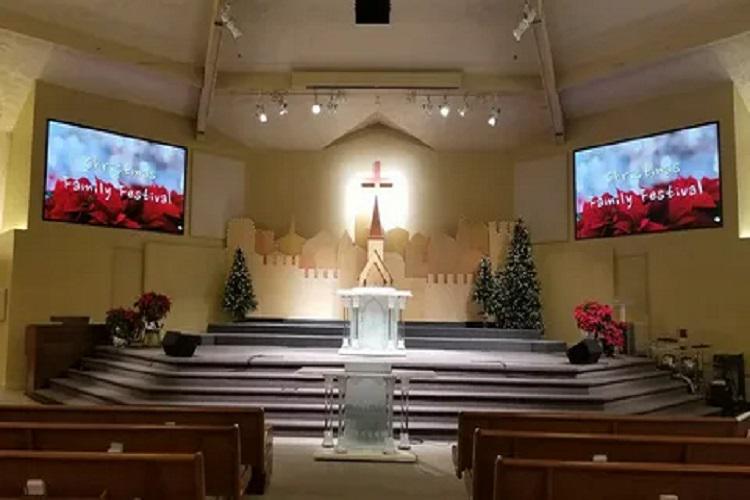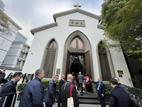In the context of ecclesiastical governance, it can be advantageous to allot a measure of latitude within the confines of institutional administration.
Presently, the pursuit of legalization and institutionalization has become a shared objective across diverse sectors of society. As a social entity, the church inherently finds itself amidst the prevailing trend of seeking institutionalized and standardized governance.
In addition to adhering to external policies such as the "Administrative Measures for Religious Activity Venues," there is an increasing awareness within the church regarding the challenges posed by expanding congregations, multifaceted ministries, and an insufficient workforce. The realization is that robust institutional systems can, in fact, bolster the development of the church.
Simultaneously, an emerging phenomenon characterized by rigid and unyielding management practices, coupled with an inclination to emulate others without due consideration to practicality, has surfaced. Some specific churches have heightened their appraisal mechanisms, mirroring corporate strategies such as performance-based eliminations, thereby placing workers under strain and inadvertently detracting from pastoral duties. While some have introduced wage frameworks, practicality is often disregarded, and pastoral staff are required to rigidly adhere to office hours. Instances also exist wherein churches' endeavors to alleviate pastoral burdens inadvertently result in the duplication of administrative protocols, consequently giving rise to conflicts over volunteer prerogatives.
During my visits, I encountered two churches that offer insightful paradigms of effective management.
Located in the southwestern city of Y, an area often confronted with economic disparities on the national scale, substantial employment pressures, and a considerable exodus of young adults to more developed, job-rich regions along the southeast coast, churches in this region grapple with congregational attrition and aggravated financial challenges.
Confronted with the challenge of financially sustaining pastors, the church encountered a significant number of pastors grappling with financial hardship. Nonetheless, H Church effectively addressed the concerns of its workers by introducing a structured salary scheme, thereby enabling them to concentrate on ministry and facilitating the church's organic growth.
"Some churches advocate that pastors should forego salaries and instead rely on charitable contributions from believers. However, without financial stability, pastors often find themselves compelled to express their monetary difficulties, appealing for modest financial assistance today and incrementally more tomorrow."
Pastor X of H Church criticized this inconsiderate treatment of workers. Two decades ago, during a time when the prevalent sentiment was that "pastors should endure hardships," their church initiated the provision of livelihood allowances for pastors. In 2008, they formally codified the salary structure, affirming, "Even in cases where salary disbursements face obstacles, predefined standards must be upheld."
With the exception of the leader overseeing the church, training center, and social service initiatives, who enjoys an augmented remuneration of 1000 yuan, all full-time workers, encompassing pastors to finance personnel, receive an equitable monthly salary of 5000 yuan, accompanied by comprehensive social security benefits.
From his perspective, this seemingly "unrefined" salary framework constituted the pivotal catalyst behind the rapid growth of the church. While criteria such as tenure, educational background, and designation were meticulously calculated and ostensibly equitable, they proved less advantageous for newcomers to the church's service, particularly younger individuals.
In the interest of facilitating church operations, H Church and the training center procured vehicles. The organization covers insurance expenses, and costs associated with fuel and vehicle maintenance for the workers' conveyances are eligible for reimbursement upon presentation of valid receipts.
The provision of vehicles to employees is a practice not uncommon within contemporary churches. "However, in contrast to other locations where reporting vehicle usage and subsequent record-keeping are requisite, we eschew such procedures due to their superfluous nature and impracticality. Workers enjoy a significant degree of autonomy over vehicular usage. After all, what other functions can pastors perform? The act of driving involves visiting congregants, attending services, and participating in selected activities. Given our extensive years of collaborative work, it's only natural."
Demonstrating genuine concern for church personnel, coupled with an intimate comprehension of their needs, H Church utilizes systems to serve rather than to govern or supervise, thus effectively retaining talented individuals for the church's advancement. A stable and high-caliber team of workers has been established, thereby underpinning the church's growth. Amidst a backdrop where numerous churches grappled with the challenge of sustaining operations amidst the pandemic, this particular church continuously expanded its sphere of influence. Notably, it embarked upon the construction of a new place of worship and concurrently initiated the development of two emerging social service initiatives.
Conversely, the practices of Y Church on the eastern coast underscore the premise that once a system has been meticulously refined, teaching assumes a substantive role akin to the lifeblood that permeates and sustains the framework of regulations, ultimately guaranteeing the realization of set objectives.
The ecclesiastical responsibilities are categorically divided into two spheres: ecclesiastical administration and pastoral ministry. Y Church has undergone several transformative phases, transitioning from a paternalistic approach to decision-making vested in a church council. Subsequently, with a view to optimizing pastoral resources, they established a pastoral team, colloquially referred to as a ministry committee, vested with the responsibility for educational ministries such as choirs, discipleship, fellowships, and retreats. Concurrently, administrative and financial responsibilities were divested to the church council, thereby achieving a segregation between ministry and administrative affairs, with the council retaining the ultimate decision-making authority.
During my visit, another prominent church in the vicinity captured my attention due to internal discord. The ministry group aspired to cultivate small groups; however, the church council recurrently deferred financial approvals, thereby impeding the seamless progression of the ministry. To ensure congruence between the church council's decisions and the trajectory and requisites of pastoral ministry development, Pastor Z of Y Church proposed that pastoral staff be integrated into the church council.
"Within our church, it is stipulated that all elders, pastors, and evangelists in service concurrently serve as members of the church council. This dynamic ensures that one-third of the council members represent pastoral workers, while the remaining two-thirds comprise congregational representatives," articulated Pastor Z.
He elucidated that in addition to conventional discipleship training, which encompasses biblical study and theological exploration, Y Church has also devised a nurturing framework tailored to small groups. This paradigm encompasses courses aimed at fostering personal growth, such as elucidating the gospel and embracing a new life, alongside methodological curricula centered on church organization, ministry approaches, and evangelistic techniques.
"The majority of congregational representatives have undergone this comprehensive three-year nurturing program. This engagement has considerably facilitated their comprehension and endorsement of the merits inherent in decisions rendered by the ministry committee," Pastor Z concluded.
In essence, systems can be likened to circles that can never be perfectly circumscribed. Exclusively depending on intricate rules while constricting the sphere for human discretion does not unequivocally assure the desired outcomes. Achieving judicious decisions and circumventing superfluous conflicts ultimately rests on the abiding influence of the Holy Spirit within believers and church personnel. Pertaining to the amalgamation of compassion, the Holy Spirit, and systemic constructs, Y Church fosters a "people-centric" ethos through a regimen of "nurturing," thereby harmoniously melding the structure of systems with the vitality of spiritual life.
- Translated by Abigail Wu












